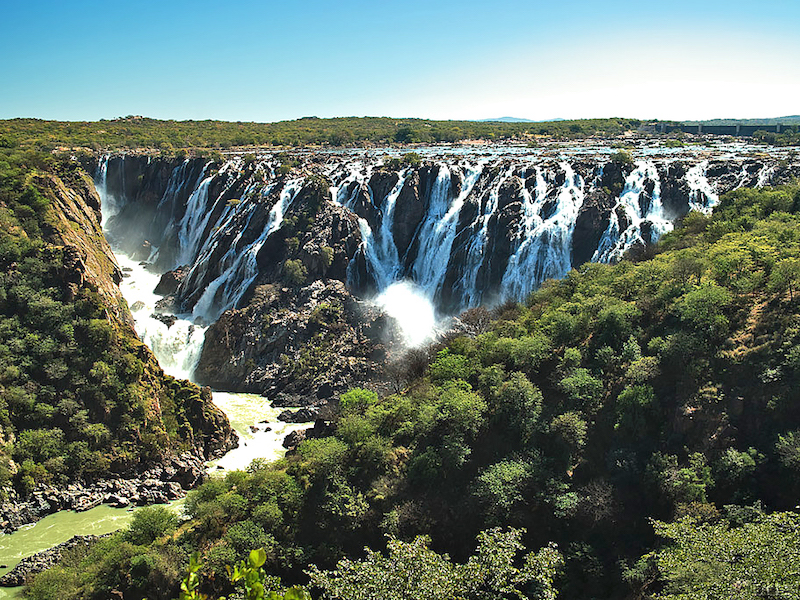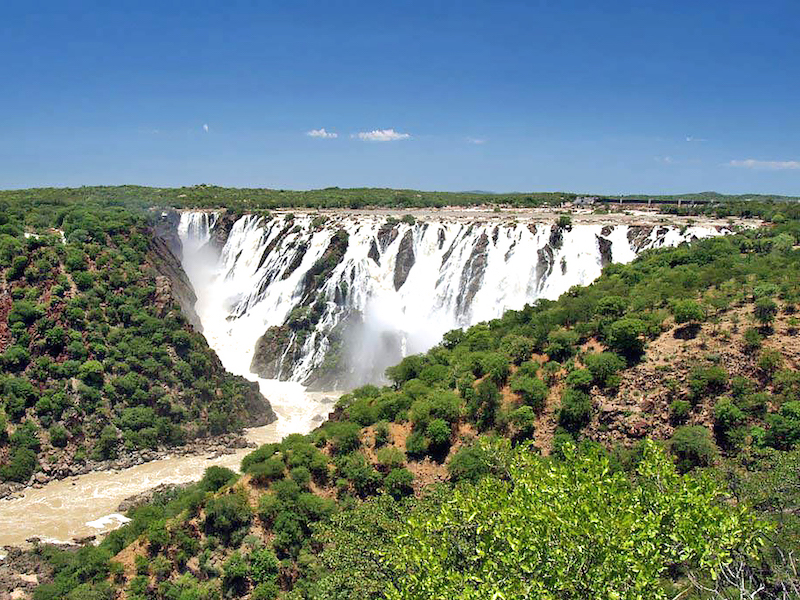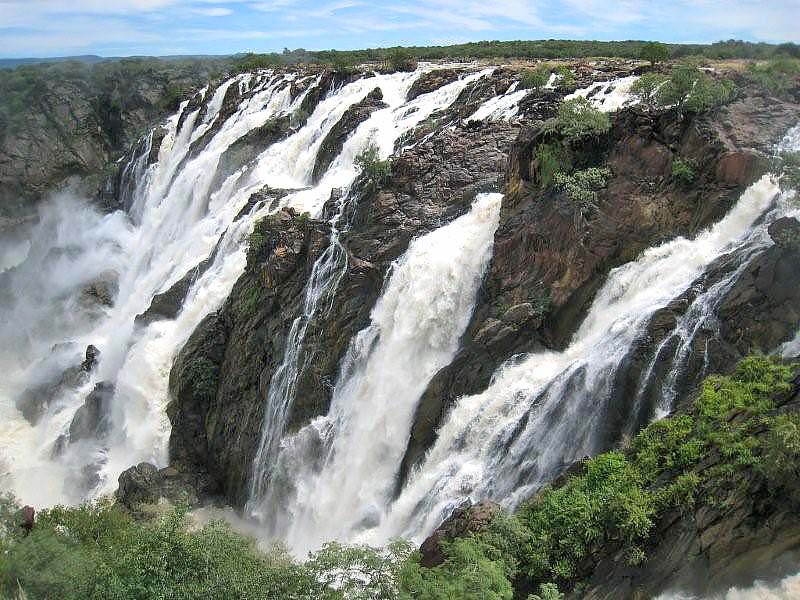- Hotels
- Pack`s and Promotions
- Packs and organized circuits
The Ruacaná Falls are a group of waterfalls and rapids formed by the Cunene River in the vicinity of the village of Ruacaná, on the Angola-Namibia border.
The set is one of the largest waterfalls in Africa, both in terms of flow and width. Immediately upstream, the Ruacaná Dam was built, which in conjunction with the Calueque Dam, located some 40 km upstream, supplies a hydroelectric power station built by the Republic of South Africa in the 1970s and a water supply system serving northern Namibia.
At the Ruacaná Falls, Cunene takes a leap into the void that the launches towards the sea. A set of rapid and small slopes slide down the mountain in Calueque, an unmissable show of water grooves. Are, say the bills and the views, one of the biggest waterfalls in the entire African continent. Ruacana is a corruption of the name of a local soba, produced for the harsh language of the Germans who walked these lands, before there was Angola and Namibia as we know them today. After being placed the mark one from the Angolan border, Cunene would gain a southern dimension.
The Ruacana Falls would be dividing line. And right away, one of the most visited places in the region. This set of rapids and waterfalls powered by Cunene delimit the rocky plains of Ombawé. The waters churn between boulders huge cliffs and throats that, at the bottom, funnel Cunene over the last few kilometers before surrendering to the Atlantic, at its wonderful mouth. The dimension is impressive: when the water comes in full force at the time the rain, the fall extends for some 700 meters that fall cliff of 120 meters. They are part of the catalog of the biggest falls in Africa.
They say this place was even more impressive before the construction of hydroelectric power stations that regulate its flow. And before more and more frequent droughts that transform the Ruacaná Falls into a lunar landscape crossed by a suffocating Cunene. But it is when the water comes, in a torrent, from the top of the 1840 meters where the river is born (Boas Águas, in Huambo), that Ruacaná becomes Queda.
Thick drops come out fired in all directions, light breezes surround the trees that are born on the cliffs of the cliff. Deep roots, overcoming the brutal force of gravitationally moving liquid. Play it safe, and visit the Falls at the time the rains. At that time, the show is even bigger.
The people who live in the region are the Himbas descended from the Herero people (south of Angola) who went down to the south entering northern Namibia in search of better pastures for cattle. They essentially live on pastoralism, also growing maize for a substance, their food is based on meat, eggs, corn, aromatic herbs and honey. Its dialect is the Otjiherero dialect this nigero-congolense, spoken by the Hereros in Namibia, Angola and Botswana.
For your accommodation, the opportunity to stay at the Ruacaná Eha Lodge located in Ruacaná, Kaokoland, Namibia; Ruacaná Guest House located at 62 springbok Avenue, Ruacaná, Namibia; Manjujo Guest House located in Oshifo Ruacaná, main road, olifa, Namibia; Cunene River Lodge located in Ruacaná Namibia; Lodge CTG Guest House, Spa and relaxation located on Viepoint Street, Namibia. So that your entertainment can take a stroll to Kalamazo Entertainment located in Oshifo, Namibia.
Gallery:
Location:





